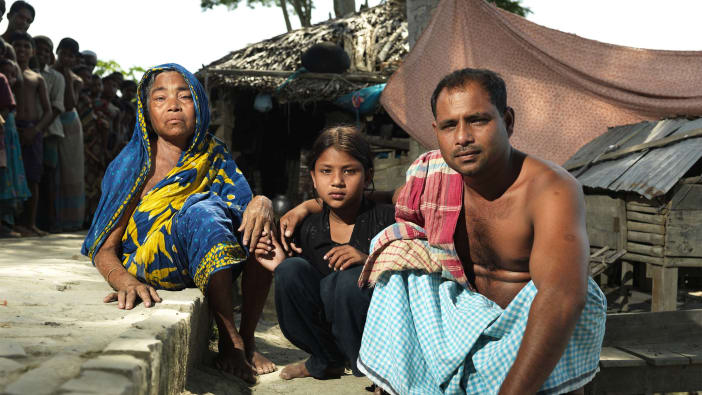The term biodiversity is used to describe the huge variety of life on this planet. An astonishing 1.8 million different species have been identified and named by scientists. Yet we still do not really know how many there are in the world.
We know that there are about 8,600 species of birds, 4,000 species of mammals and 32,000 species of flowering plants because these organisms are relatively well studied. However, there is still uncertainty about other organisms such as insects, (where estimates vary from eight million to a hundred million), fungi (where 70,000 have been identified but 1.6 million are thought to exist) and little-studied organisms such as bacteria, nematode worms and mites. There are at least eight million species in the world, and probably a lot more, so scientists who identify, name and classify organisms still have a lot of work to do. One of the greatest challenges for the new millennium is to increase our knowledge of the organisms with which we share this planet.
There are three aspects of biodiversity:
- the variety of habitats (environments) in which living organisms live
- the number of species
- the variation within each species.
Why preserve biodiversity?
This diversity holds together life on Earth. The green plants on land and microscopic plants in the oceans produce the oxygen we breathe. Global climate change would be far worse if it were not for the role of forests and oceans in absorbing much of the carbon dioxide we are putting into the atmosphere. Mangrove forests hold tropical coastlines together. Each individual species depends upon others for its existence and the links between different species hold life together. If one species is removed then the others that depend upon it will also either die or be seriously affected.
Some species are particularly important because without them their whole ecosystem will collapse. For example, forest trees and ocean plankton, which control our climate, are often little valued by people, but their role in controlling our environment is the single most important aspect of biodiversity.
A second reason for protecting biodiversity is because humans are dependent upon it. We depend on biodiversity for our food, medicines, shelter, for many industrial products such as wood and rubber, cosmetics and many other products. As we lose species, we are also losing potential new medicines and foods that may be needed to continue human life on Earth. For example, over half our medicines come originally from plants, and new ones are still being discovered. A recent example is the anti-cancer drug, taxol, from the bark of the Pacific yew tree.
A third reason for preserving biodiversity is ethical. Is it right for people to destroy so much of God’s creation? The story of Noah in the Bible shows how God cares for all living creatures.
Fourthly, we should preserve biodiversity purely for beauty and enjoyment. It would be a dull world without the flowers and songbirds around us, or the whales in the sea or the magnificent animals on the plains of Africa.
Using biodiversity
Modern western agriculture is based mainly on growing large areas of a single species such as wheat, rice or maize (monoculture). Traditional agriculture depends on diversity and is more protected from pests and disease because of its diversity. Even modern agriculture depends on the genetic diversity of the wild species that are related to crop species. From time to time plant breeders use characteristics from these wild relatives to improve crops. Only 20 years ago an unknown relative of maize (named Zea diploperennis) was found in Mexico. This new species was almost extinct but was an important discovery for the future of maize because it is resistant to some of the common diseases and is also perennial. Species like this are vital for the future of our crops. If that species had not been discovered, it would have become extinct and its useful characteristics would have been lost forever.
Traditionally, useful characteristics from wild species have been bred into crops by plant breeders and by farmers who select varieties with characteristics they want. However, it is now possible to transfer genes between unrelated organisms through the process of genetic engineering. This is a technique that has great potential to help tackle the problem of world hunger, but is being abused by some commercial companies. Rather than concentrating on methods to feed the hungry, genetic engineering is being used to provide large profits for these companies. Features such as herbicide resistance are being placed into crops. For a while one company planned to produce crops that would not produce new seed so that farmers would have to buy new seeds each year. Fortunately there was so much protest about this so called ‘terminator technology’ that the company has abandoned the idea at present.
Rather than using genetic engineering to provide excessive profits, it should be used to develop more nutritious and high yielding crops. One such development is the production of rice with a high level of vitamin A. Vitamin A deficiency causes blindness and other problems. The company developing this rice released their patent rights so that vitamin Arice can be freely developed.
People need to be informed and involved in these issues. People power counts! India challenged a US patent on the insecticidal properties of the neem tree that they had been using for hundreds of years. Peru challenged the patent on their well-known hallucinogenic plant ayahuasca. Both patents have now been rejected.
We should not condemn a technique that has much to offer the world, but rather see that genetic engineering is properly used to help feed the world.
Professor Sir Ghillean Prance FRS is Scientific Director of the Eden Project in Cornwall and Visiting Professor in the School of Plant Sciences of the University of Reading. He was Director of the Royal Botanic Gardens, Kew from 1988 to 1999.
His address is: The Old Vicarage, Silvery St, Lyme Regis, Dorset, DT7 3HS, UK. E-mail: [email protected]









